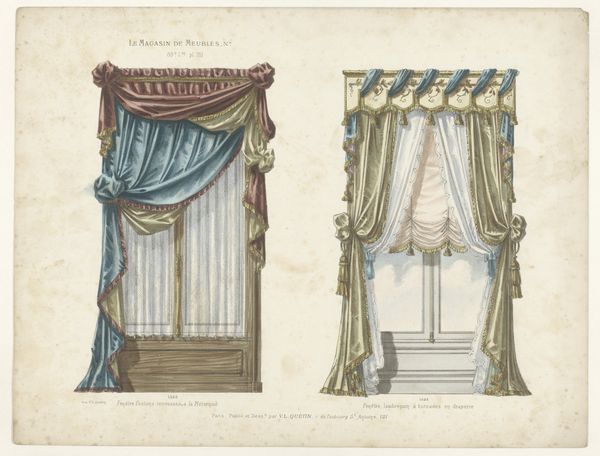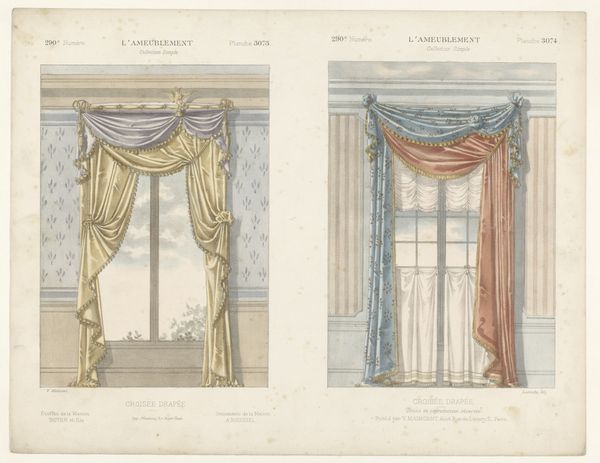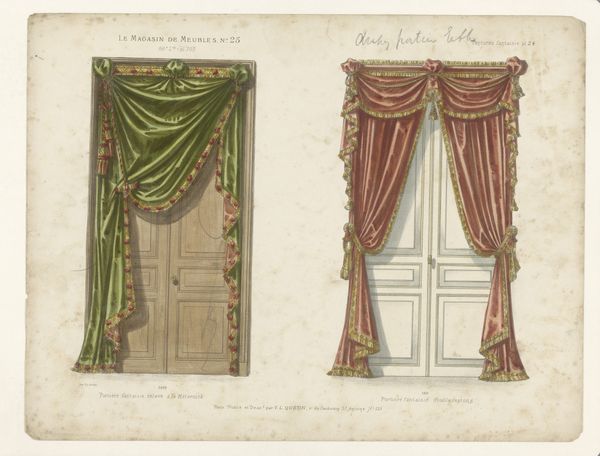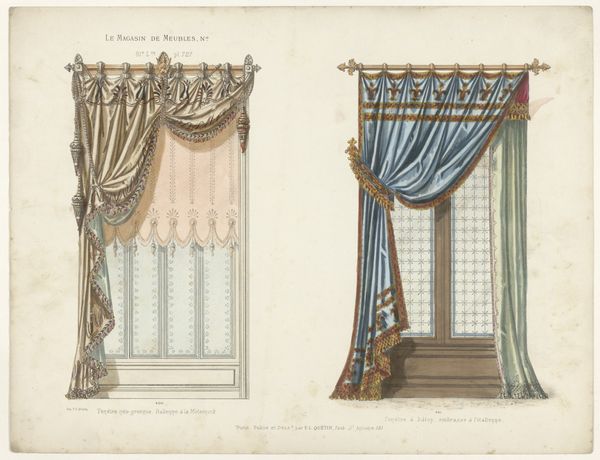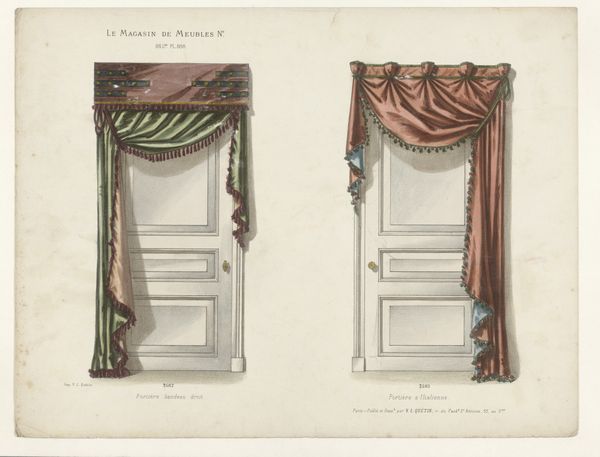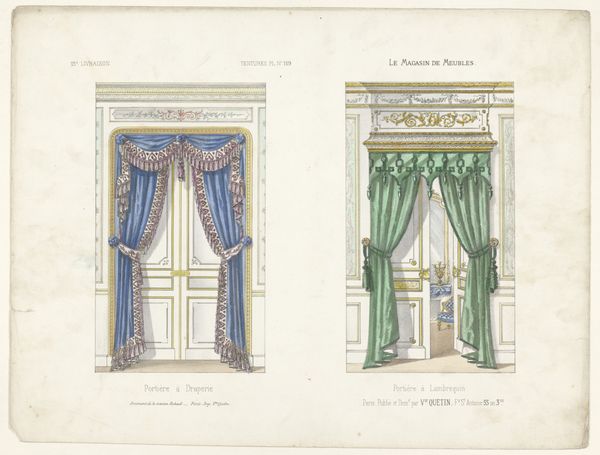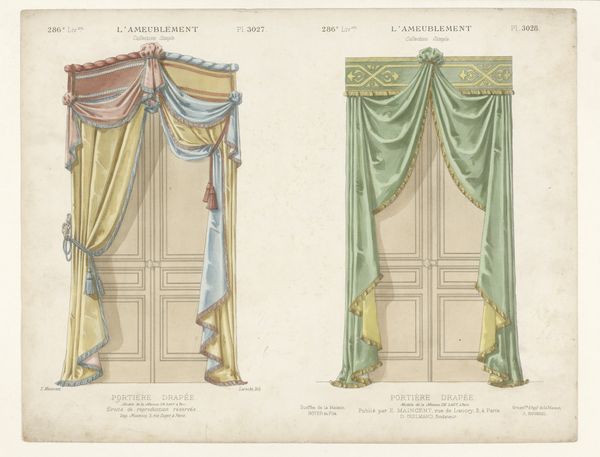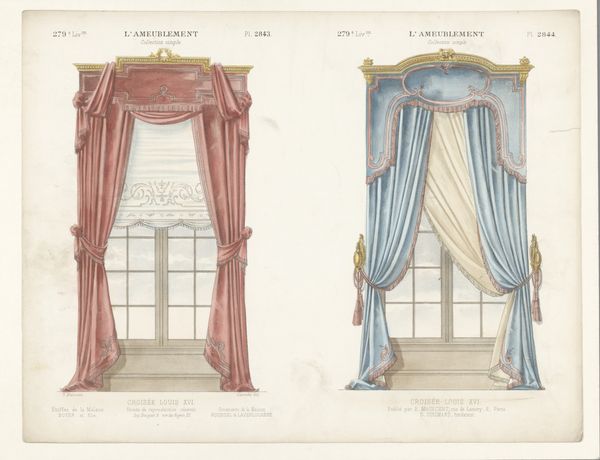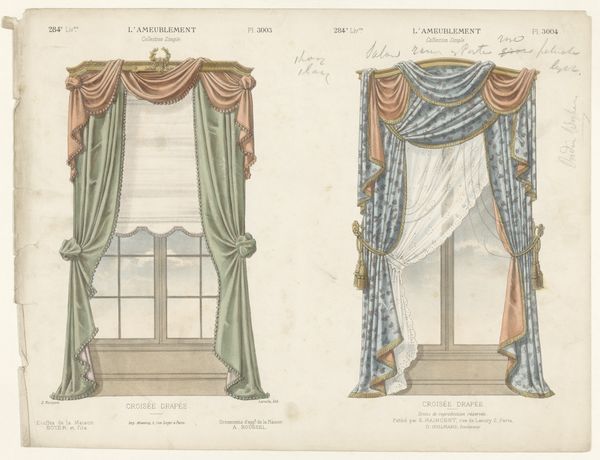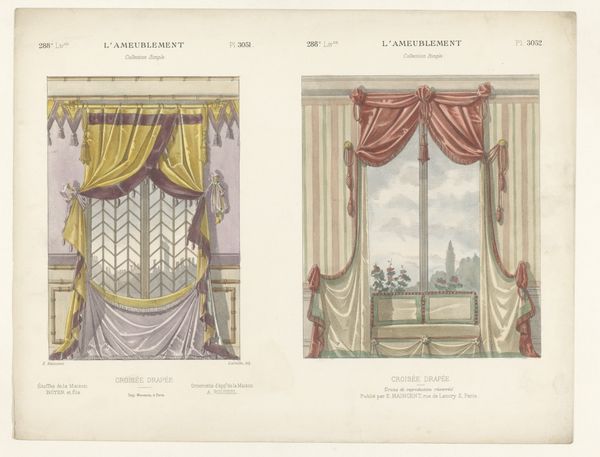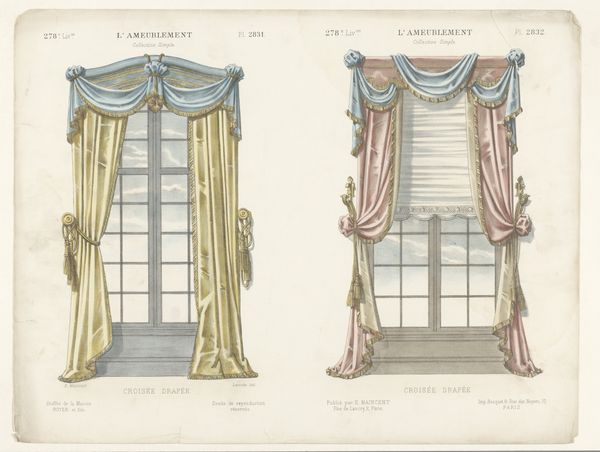
drawing, print, watercolor
#
drawing
# print
#
watercolor
#
coloured pencil
#
watercolour illustration
#
decorative-art
Dimensions: height 275 mm, width 359 mm
Copyright: Rijks Museum: Open Domain
Curator: Welcome. Let's consider "Twee vensters met gordijnen," an unsigned watercolor, drawing and print believed to be from after 1878. Immediately striking, wouldn't you agree? Editor: Absolutely. It’s intriguing, isn’t it? Almost theatrical with the rich blues and greens. You get a real sense of the opulence these window treatments would have provided to a bourgeois home. But I'm curious about the labor involved. Curator: Let’s not overlook that it's a study of two distinctly styled draperies. The use of watercolor gives a fantastic sheen to the simulated fabric. Think about the detailed labor in design and production—the dye processes, the weaving—likely very gendered, right? Editor: Exactly! Women were central, not only as consumers but often as the primary producers of such intricate textiles and decorations. The details like the tassels, the intricate stitching on the lace panels... it speaks volumes about the time and skill invested. Were these patterns available to copy, making these images act as more accessible commodities for some people? Curator: Good question. But notice how even within the relatively simple medium of watercolor and print, it communicates material wealth. The intention isn't only about design but an advertisement for the material possibilities and luxury itself. Editor: Agreed. And by explicitly labeling this as coming "Le Magasin de Meubles N" implies consumption as a way to move between classes, as domestic aesthetic became intrinsically linked to social identity and performance. These curtains are essentially costumes for the home. Curator: And that is, of course, also how commerce functioned. Think about our consumption patterns now! We're often less tied to durability than trends, appearances and social perception. Even a study in fabric, like this, illustrates this. Editor: It's a potent reminder to consider not just the aesthetic pleasure of the design, but the broader networks of making, buying, and meaning connected to seemingly simple home furnishings. Curator: It gives us a lens to appreciate how commodities shape and reflect socio-economic power dynamics. Thanks for sharing those connections! Editor: My pleasure, I learned so much by seeing all this, thanks.
Comments
No comments
Be the first to comment and join the conversation on the ultimate creative platform.
